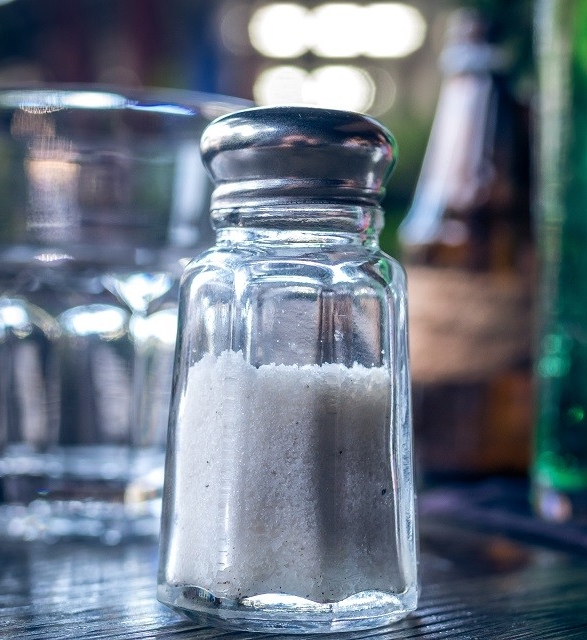article
What you need to know about sodium
What is sodium?
Sodium is a mineral that is essential for life. It is found throughout our body and plays a role in basic bodily functions that include the regulation of blood pressure, the contraction of muscles and the firing of nerve cells.
What are the sources of sodium in the diet?
We get the sodium our bodies need from the foods and beverages we consume. Most food contains sodium, but the amount varies depending on the food.
Plant foods (e.g., fruit, vegetables, grains and beans) and meats and seafood (e.g., beef, pork, chicken and fish) naturally contain very little sodium. When these foods are processed into canned vegetables, pickles, canned beans, deli meats and other foods, sodium is added to enhance flavour and prevent spoilage. Sodium additives include salt (sodium chloride), preservatives such as sodium nitrate and flavour enhancers such as monosodium glutamate (MSG). The vast majority of excess sodium consumed in the world is from these sodium additives, not from the natural foods themselves.
In Canada, about 75% of sodium intake comes from processed foods and takeout/restaurant foods. Ten to 15% is added at home during food preparation or from the salt shaker at the table.
Foods that contribute significantly to our sodium intake include:
- Fast foods such as pizza, burgers and hot dogs
- Restaurant food
- Canned foods including soups, beans and vegetables
- Frozen meals such as frozen dinners, frozen pizza and frozen patties (vegetable and meat-based)
- Highly processed meats such as deli meats and sausages
- Bread and other baked goods
- Cheese
- Condiments such as ketchup, mayonnaise, mustard, olives and pickles
- Store-bought salad dressings
- Sauces (e.g., soy sauce, BBQ sauce, Teriyaki sauce)
- Highly processed snack foods such as potato chips, popcorn, crackers, nachos and pretzels
- Table salt, sea salt, kosher salt and fancy salts like "fleur de sel" or pink Himalayan salt. Note that all forms of salt contain the same amount of sodium by weight!
What are the health risks of consuming too much sodium?
High sodium intake increases the amount of sodium in the bloodstream, which draws water into the blood and increases its volume. With greater blood volume the heart has to work harder, the tiny blood vessels of the kidneys are damaged and more pressure is put on blood vessel walls leading to increased blood pressure.
High sodium diets are associated with an increased risk of heart disease, stroke, heart attack, heart failure and kidney disease. A high sodium diet is also associated with an increased risk of stomach cancer.
Reducing sodium intake can help prevent hypertension (high blood pressure) and can lower blood pressure in people who already have hypertension.
What are the recommendations for sodium consumption?
Health Canada recommends an upper limit of 2,300 mg/day for people who don’t have — or are not at risk for — hypertension. This is equal to about one teaspoon of salt.
Limiting sodium to 1,500 mg/day may be useful for people who are at increased risk for hypertension or stroke. This decision should be made by the individual and their health care provider.
On average, Canadians consume about 3,400 mg of sodium each day.
What can I do to reduce the amount of sodium in my diet?
There are several steps you can take to reduce the amount of sodium that you consume.
- Prepare your own food. Salt is cheaper to use than higher-quality flavourings, so food manufacturers and restaurants add a lot of it to their foods. By cooking at home you can control the amount of sodium you add to food as well as use herbs and spices for flavour rather than salt.
- Choose unprocessed whole foods. Because ingredients such as salt, MSG and sodium nitrate are added to natural foods when they are processed, choosing less processed foods will lead to decreased sodium in the diet. For example, choose:
- Fresh vegetables rather than canned vegetables, pickles or vegetable juices
- Whole grains such as quick cooking oats rather than processed grains such as instant oatmeal
- Pork chop, steak or chicken breast rather than processed meats like salami, bologna or hot dogs
- Read food labels. Choose low sodium foods and limit foods that contain a lot of sodium. See below for information on using food labels to reduce sodium.
- Choose reduced-sodium ingredients for your home-cooking, such as reduced-sodium soy sauce or reduced-sodium canned tomatoes.
- Choose reduced-sodium options of foods you eat often or eat a lot of, such as reduced-sodium bread.
How to use a food label to reduce sodium
Most packaged foods contain a Nutrition Facts panel that indicates the milligrams of sodium in a serving. It also indicates the % Daily Value of sodium that is based on 100% of the daily recommended amount, which is about 2,300 milligrams.
The sodium content and % Daily Value are based on one serving of the food, but most containers have more than one serving. Look at the serving size and determine how many servings you are consuming. If you are consuming two servings you need to double both the amount of sodium and the % Daily Value.
Nutrition claims on food labels can be helpful, but they may also be misleading. Terms like "salt-free" or "sodium-free" indicate that there is less than 5 mg of sodium per serving. However, the terms "sodium-reduced," "less salt" and similar claims indicate that sodium levels are reduced by 25% or more compared to the regular version. The food can still be very high in sodium ... just not as high as the regular version. Don't count on nutrition claims on the front of the package; rather, consult the Nutrition Facts panel.
For more information, consult the sodium pages from the Dietitians of Canada.


